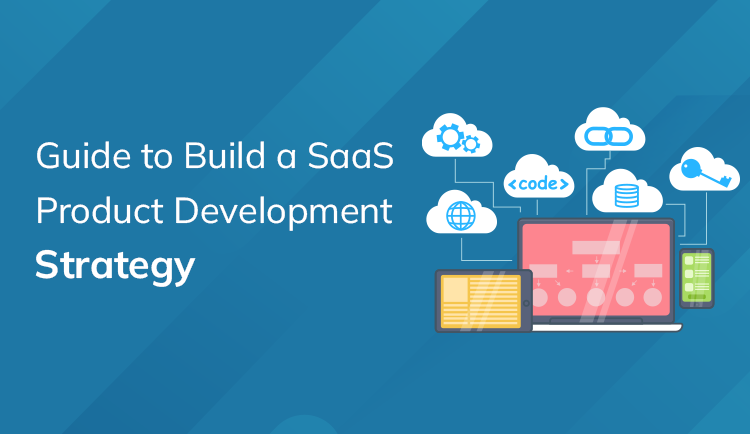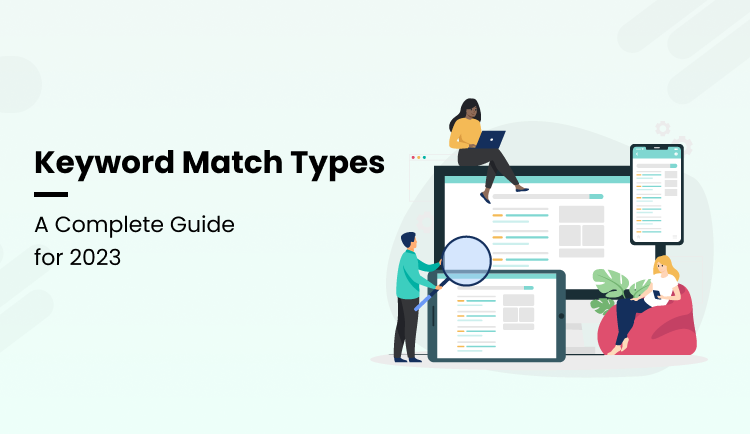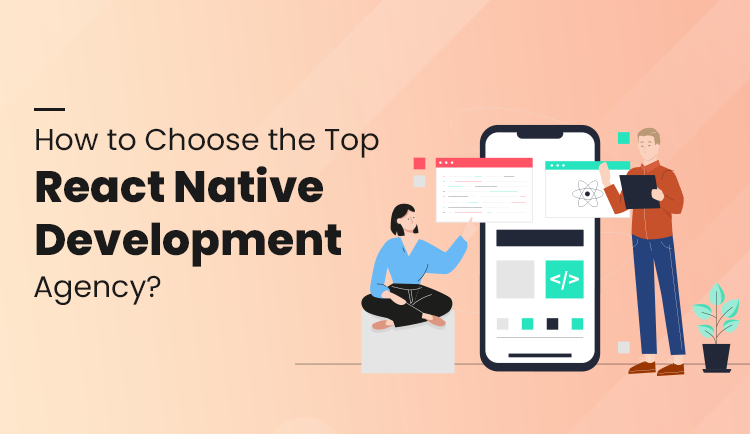
Ultimate Guide to Build a SaaS Product Development Strategy
The COVID-19 pandemic has changed the economic structure, affected workflow, and underlined the necessity for a hybrid virtual paradigm.
Businesses are engaging SaaS product development strategies to produce go-to solutions for modern business requirements and the need for a hybrid virtual model.
When the pandemic halted company operations, the cloud ensured business continuity, which boosted demand. SaaS remains the dominant cloud service form, followed by IaaS and PaaS.
Today 80% of firms utilize some form of SaaS. It helps firms win with digital-age clients despite market uncertainty. Undoubtedly, the SaaS market and revenue will continue to expand.
But before you begin to create your SaaS product development roadmap, you should…
Keep in mind that there is a darker aspect to the SaaS business.
The odds of success are low if you don’t keep up with its excellent standards. Therefore, it is crucial to get the SaaS product development process right from the start.
SaaS product development can be difficult even for seasoned engineers in the quick and dynamic market. There are a lot of variables, so it’s essential to follow the right SaaS product development approaches at each stage.
This article will discuss the best ways to build the SaaS product development strategy for your company.
So, let’s get started…
What is meant by the term “SaaS Product”?
Software as a service (SaaS), also known as web-based software, on-demand software, or hosted software, is an online application to which all end users have access.
Most software as a service (SaaS) offerings are web and mobile applications installed for usage. Users pay a recurring monthly or annual charge to use the software.
Apps offered as a service are always run on the servers of the service provider. Users of SaaS platforms do not need to install anything on their devices in order to utilize the platform. The service provider is responsible for managing access to the application, including aspects such as performance, availability, and safety.
Benefits of “SaaS Product.”
Cloud-based infrastructure offers various benefits; take a look at some of them:
1. Cost-effective solution
SaaS is a cost-effective solution for businesses as it helps them save money in many ways. SaaS eliminates buying and installation expenditures. With SaaS, maintenance and upgrades no longer matter. SaaS programs are easily downloadable and require little upkeep from the user.
2. Time-saving solution
SaaS helps firms save both time and money. SaaS programs require only an internet connection and login. The best thing is that SaaS vendors take on maintenance obligations, eliminating downtime and unnecessary work hours.
3. Scalability
More often than not, SaaS solutions are scalable. This implies that the SaaS application development company hosts the software. Organizations can change their usage plan at any point in time. The best thing is that SaaS solutions are web-based. This means users can access their data and operate successfully from anywhere, making it easier for home workers and multisite workers.
4. Highly secure solutions
SaaS solutions can usually keep company data safer than traditional applications. All your data is stored in the cloud. SaaS providers take effective measures to provide users with the utmost security.
5. Greater compatibility
Traditional software updates are time-consuming and costly. However, with SaaS, users can easily upgrade to the latest version. SaaS vendors handle updates and upgrades, eliminating the need for patches.
SaaS ensures end-users have the latest software version. All in all, Software as a service eliminates software maintenance and incompatibility, boosting your company’s efficiency.
Why is a SaaS Product Development Strategy Important?
When you are establishing a SaaS business, there will inevitably be a lot of twists and turns along the way. The right SaaS product development strategy will guarantee the right direction.
Not only does having in place a SaaS product development roadmap provide clarity for your product team, but it also does so for your development, sales, and marketing teams, all of which need to collaborate in order to ensure that a product is successful when it is released onto the market.
If you don’t have a well-thought-out plan for developing your SaaS products, you can find yourself losing focus on the broader context every time a crisis arises. As a result, you won’t be able to provide true value to your clients, which will ultimately affect your business.
Let’s now look at how you can build an effective SaaS product development strategy for your company.
Here we go…
10 Crucial Components That Make Up A Successful SaaS Product Development Strategy
1. Narrow down your target audience.
The first and foremost step to building a solid SaaS product development strategy is to narrow down your target audience. You may think there is a market for your product; however, your market may not be driven by the same factors you thought.
Therefore, to maximize your chances of success, you must verify that there is a market for your product. These things may be tested and refined through market research and prototyping, allowing for the avoidance of potentially unpleasant experiences later.
This is one of the most important steps in determining SaaS product development stages.
To begin, you must ask yourself who your target audience is and…
- What are their objectives, exactly?
- What are the most difficult problems and obstacles that they confront on a daily basis?
- Are they willing to pay for solutions that could potentially alleviate these difficulties and areas of friction?
If you answer these questions, you will gain a much clearer understanding of how your product fits in, the value that it delivers, and how it will improve the lives of your customers.
If your product won’t be able to make your customers’ day-to-day life easier, then it is unlikely that they will find it useful enough to continue using it and paying for it.
2. Define your product vision
Why you want to launch a product is a primary question you must ask yourself. Your product vision will not explain what your product does; rather, it will explain why your product is important.
- How would the use of your product make the lives of your ideal customer better?
- What kind of effect will it have on their business or day-to-day lives?
- How will your product influence your target audience? And so on.
Once you have the answer to these questions, you will be able to build the right SaaS product development roadmap.
3. Know your competitors
Knowing only your target audience is not sufficient for the process of building a solid SaaS product development strategy. You must be aware of your competitors and their activities.
Find out:
- What are your competitors doing?
- What are some other SaaS product development approaches that they are implementing to solve the problem that you identified?
It is essential to evaluate early on in the process whether or not your product is appealing enough to people for them to spend money on it and embrace it.
This is especially important to keep in mind while you do market research to evaluate how your product will fare in comparison to that of other companies and to determine your place in the market.
4. Specify your business goals.
Specifying your business goals before writing the code lines is a MUST. In the absence of clearly articulated goals, investments run the risk of being wasted.
If you have a clear understanding of your business goals, you will be able to choose the right technology along with the functions and features you want to add to your SaaS-based products.
Clearly articulated product goals will help you determine whether you are executing your SaaS product development strategy successfully over time or not.
5. Create an efficient SaaS product development roadmap.
Therefore, after you have a grasp of your vision and how it translates to the demands of your target customers, you should concentrate on developing a minimal viable product (MVP) that can give value to your clients as rapidly as possible.
The easiest approach to validate the assumptions that went into developing your product strategy and roadmap is to use your minimum viable product (MVP). Check to see that the things you have planned for your roadmap are in line with your product strategy.
6. Validate your SaaS product development stages.
After you have created your initial product roadmap, you should consult with your target consumers to see whether or not you are concentrating your efforts on the appropriate early features and whether or not your strategy is appealing to those target customers.
Sharing feature previews with your consumers, performing customer surveys, and conducting user interviews are all great ways to validate your product roadmap as your client base increases.
7. Determine your key performance indicators (KPIs).
After you have defined your goals and objectives, the next step is to assign certain metrics or key performance indicators to each of those goals.
This is the metric that will assist you in determining whether or not your SaaS product strategy is being successfully executed.
These key performance indicators (KPIs) may include usage measurements, adoption measures, growth targets, roadmap velocity, etc.
It is essential to define these indicators at this time. These indicators will help you evaluate your success as you put your SaaS product development strategy into action.
8. Pick the right product features.
What features you pick for your product can make or break the whole game for you. Your features will play a crucial role in determining whether or not your product is worth buying.
There will always be some overlap amongst SaaS products, so it’s important to have a solid game plan for features, personalization, integration, and safety.
You don’t need to add redundant features to your product just to keep up with the competitors. The idea is to provide value to your customers and help them have an enhanced user experience.
Choose a technology stack that can be expanded to accommodate a rising number of users and more complex needs without compromising performance.
9. Choose the right pricing model.
It is vital to choose the right pricing model to guarantee customers agree to pay the amount you request. SaaS product development businesses offer different pricing models, including
- Per-user pricing: price by the number of users.
- Value-based pricing: When users pay for the value of the product.
- Tiered-user pricing: When the pricing of the product is fractionated into different tiers, and users pay as they expand.
- Flat-rate pricing: the price remains consistent in this model.
- Freemium: when users are allowed to use basic features for free and pay for the premium features of the product.
- Featured-based pricing: when users have to pay for the features they opt for.
- Pay-as-you-go: users only pay for the product they use.
Amongst all, the Value-based pricing model is considered the best. You must always choose the pricing model keeping your target audience in mind.
10. Choose the best SaaS product development company.
It is of utmost importance to choose the best SaaS product development company in order to have the best product that appeals to your target audience.
Know that the SaaS product development process involves a great deal of adaptability, continuous communication, and fine-tuning. Hence, it is imperative to choose the right company for your product. The one that makes use of more powerful tools and can successfully deliver all of these functionalities in one bundle.
Summing up
Cloud computing is in the mainstream, and software as a service (SaaS), in particular, offers a fantastic opportunity for businesses. With the correct SaaS product development strategy, you can be sure of greater success and enhanced ROI.
The deployment of SaaS products can help firms generate greater and stable revenues while also assisting them in meeting their requirements as they expand.
If you’re looking for a reputable SaaS product development company, Annexlogics is your best bet!
Annexlogics is one of the best SaaS service providers. We can assist you in achieving your business goals with minimum investment, maximum efficiency, and customized software solutions.
Contact us for more details!




